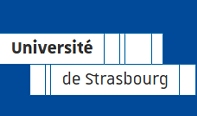Research Projects of the 1st Funding Period 2010 - 2015
The research projects described below are part of the 1st funding period that ended on March 31, 2015.
Outline of the Research
Soft matter science explores systems that are characterized by two main features:
- The systems contain mesoscopic structures with length scales of tens of nanometers to about one micrometer, resulting from the large size and ability of aggregation of their constituents (e.g., polymers, colloids or aggregates of surfactants).
- The interactions in these systems are in general weak, i.e., comparable in strength to thermal fluctuations, and often complex, since the constituents can be composed of moieties with competing affinities.
Both features impact the behavior of soft matter:
- Soft matter systems have the unique capacity of being highly susceptible to weak stimuli. Small external forces can induce significant responses allowing for a highly flexible behavior, often in the form of macroscopic changes due to the mesoscopic (re-)structuring of the system.
- Competing interactions are at the origin for one of soft matter's most striking properties: the ability to self-assemble, i.e., to spontaneously order over spatial regions much larger than the size of the constituent molecules.
Self-assembly and responsiveness offer tremendous opportunities for the design of materials with specific functionalities. The IRTG Soft Matter Science endeavours to make an important contribution to this field by a structured research programme organized in three areas (themes):
A: Controlling and directing assembly processes in soft matter systems
Competing factors which determine the assembly processes and the resulting structures are the common features of the systems considered in this theme. These factors are in particular amphiphilicity and shape anisotropy. All projects of this theme aim at controlling the assembly processes, mainly by external forces (shear, substrates, …) and/or via the design of the molecules, so as to obtain materials which have particular properties (e.g., mechanical) or functionalities (e.g., optoelectronic).
- Transient self-assembled networks (A1)
Christian Friedrich / Joachim Wittmer / Alexander Blumen - Dynamic nanostructures in self-assembled lipid bilayers (A2)
Stefan Schiller / Carlos Marques / Wolfgang Meier - Self-assembled nanoribbons and nanotubes of aromatic diamideesters (A3)
Günter Reiter / Philippe Mésini - Self-assembled donor-acceptor amphiphilic polymers (A4)
Sabine Ludwigs / Nicolas Giuseppone - Controlled nucleation and growth of conjugated polymers (A5)
Sabine Ludwigs / Martin Brinkmann
B: Designing and improving multi-component soft matter systems
Many modern materials are not homogeneous, but nanostructured composites in which different components with complementary properties are combined. This combination can bring about improved properties and new functionalities. Examples of such multi-component systems are composites formed by macromolecular nanohybrid particles, polymer films with nanofillers, polyelectrolyte multilayers, and colloid-polymer mixtures. The common goal of all projects of theme B is to find strategies for obtaining desired features by targeted engineering of the components and specific choice of the processing conditions.
- Macromolecular nanohybrid molecules (B1)
Rolf Mülhaupt / Pierre Lutz - Polymer multilayers at solid substrates (B2)
Jürgen Rühe / Gero Decher - Influence of nanofillers on the properties of polymer latex films (B3)
Eckhard Bartsch / Hendrik Meyer - Colloidal stabilization by unattached homo- and copolymers (B4)
Eckhard Bartsch / Alexander Semenov
C: Exploring and sensing interfacial properties of soft matter systems
Often, the design or improvement of advanced materials involves implicitly features and behavior introduced via the presence of interfaces. Thus, also representing a natural link between themes A and B, two groups of problems are covered by theme C: i) the interactions at interfaces between soft matter or biological systems and patterned substrates and ii) novel structure-property relationships within thin polymer films or surface layers, where the proximity of two interfaces may cause deviations from bulk properties.
- Interactions between biological systems and patterned surfaces (C1)
Jürgen Rühe / Marie-Pierre Krafft / Karin Anselme - Development of mechanically responsive sensors (C2)
Stefan Schiller / Pierre Schaaf - Modeling late stages of spin coating (C3)
Alexander Blumen / Jörg Baschnagel - Frictional and adhesive properties of polymer surfaces and films of controlled structure and function (C4)
Günter Reiter / Vincent Le Houérou - Mechanics of surface recovery and reconstruction after deformation (C5)
Rolf Mülhaupt / Hervé Pelletier
Postdoctoral Projects
- Photophysical properties of conjugated systems
Yingying Wang - Modeling complex dynamics
Falko Ziebert




